This is a trip report about my first international train journey ever. I’ve made this trip back in 2023, October 7th to be precise. Despite the close proximity of Ukraine, I’ve never been to the country before. Since 24th of February, 2022, life in the country has changed drastically. Air raid sirens are a daily occurrence, even in the western regions, where the threat is significantly lower. The following story contains my personal observations and experiences on what it’s like to be a foreign citizen during these different times.
I'll try to remain as objective as possible, so my personal observations will be written in italics. Since I was a bit afraid to use the camera near railway stations, using illustrations were inevitable. The images which are for illustration purposes will be marked by a black border.
Preparations
Unlike visiting a country of the European Union, visiting a non-EU country requires notable amounts of preparation. I’ve created a list of necessary documents, mainly from the website https://visitukraine.today/
- A valid Passport (except Georgia and Turkey)
- Proof of Accommodation/Return
- A valid Health Insurance
Designing an itinerary was not difficult at all, there are lots of trains running between Hungary and Ukraine.
| No. | Train Name | From | To | Departure | Arrival |
|---|---|---|---|---|---|
| 6284 | Passenger | Debrecen | Mukachevo | 5:58 (CET) | 11:33 (EET) |
| 963 | ZAKARPATIA | Mukachevo | Chop | 18:16 (EET) | 19:26 (EET) |
| 6289 | Passenger | Chop | Záhony | 20:25 (EET) | 19:43 (CET) |
| 6231 | Passenger | Záhony | Debrecen | 20:03 (CET) | 22:23 (CET) |
You might have noticed the short transfer time between the border train and the last train home. I have to admit, I’ve made a small mistake here, which will escalate into something significant.

I’ve booked the tickets in person at the international ticket office, exactly 4 days in advance.
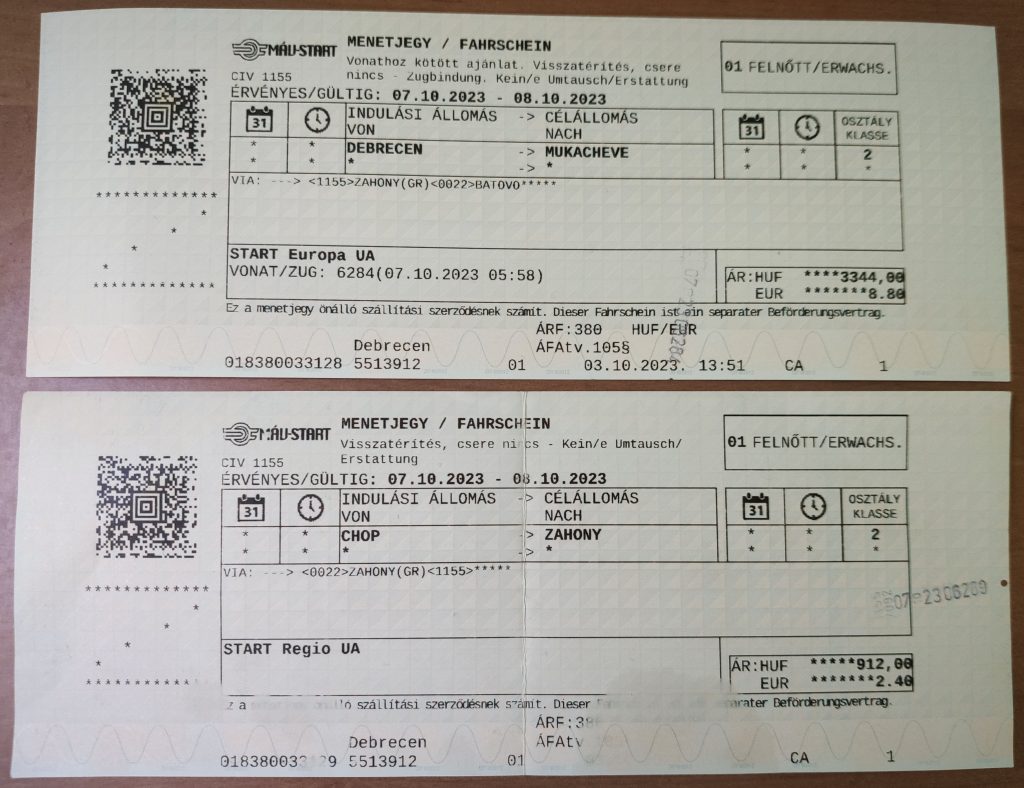
However, I was unable to book a train from Mukachevo to Chop, since the ZAKARPATIA train was not meant for domestic travel (as I’ve later found out). I’ve contacted a ZSSK employee, and he insisted to me to buy a ticket to the first Slovakian town after the border, Čierna nad Tisou, and get off at Chop. The ticket was purchased in the ZSSK app for 8€.
The total cost came out to be 19,2€.
The train from Debrecen to Mukachevo
I used the city’s transit system to get to the train station from my home. The weather was relatively warm, even though it was already October.
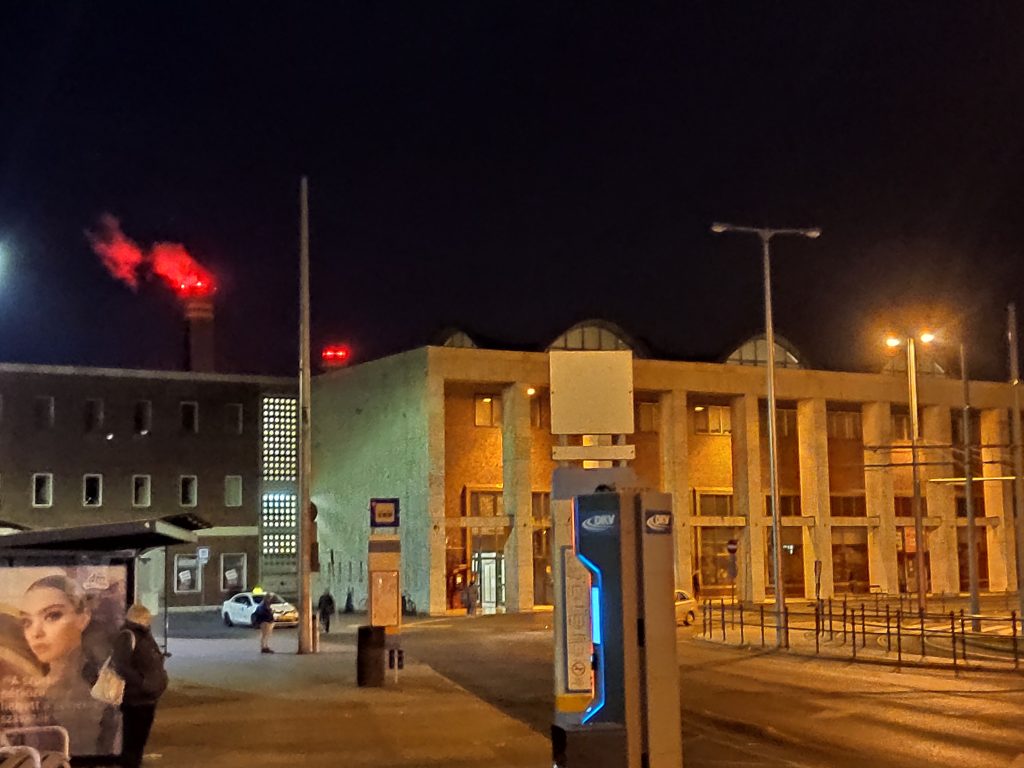
I’ve arrived approximately 13 minutes early. The only shop that was open in the station was a newspaper vendor, so I used the opportunity to stock up on some necessities, like coffee and water. After that, I went to the platform, where the train was waiting for me.
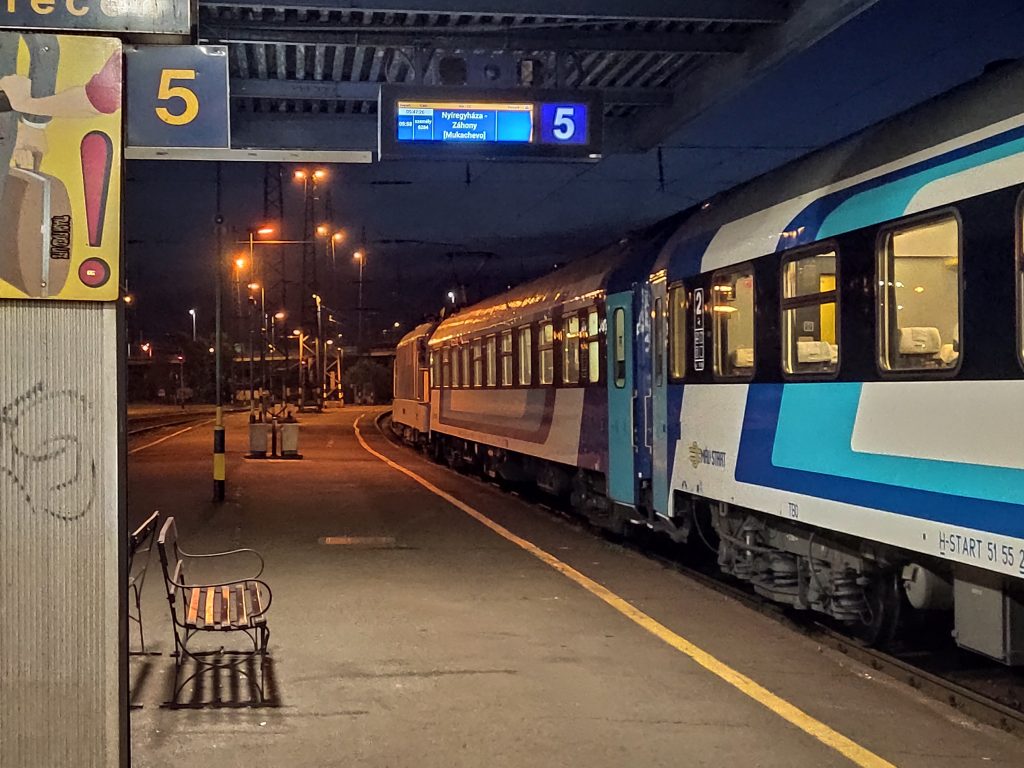
There were already some people in the carriage. Behind me were two young adults, speaking a foreign language, and to my left, there was an elderly couple. I wasn’t entirely sure if they would go across the border with me.
The train departed on time, and we were rolling towards the north.
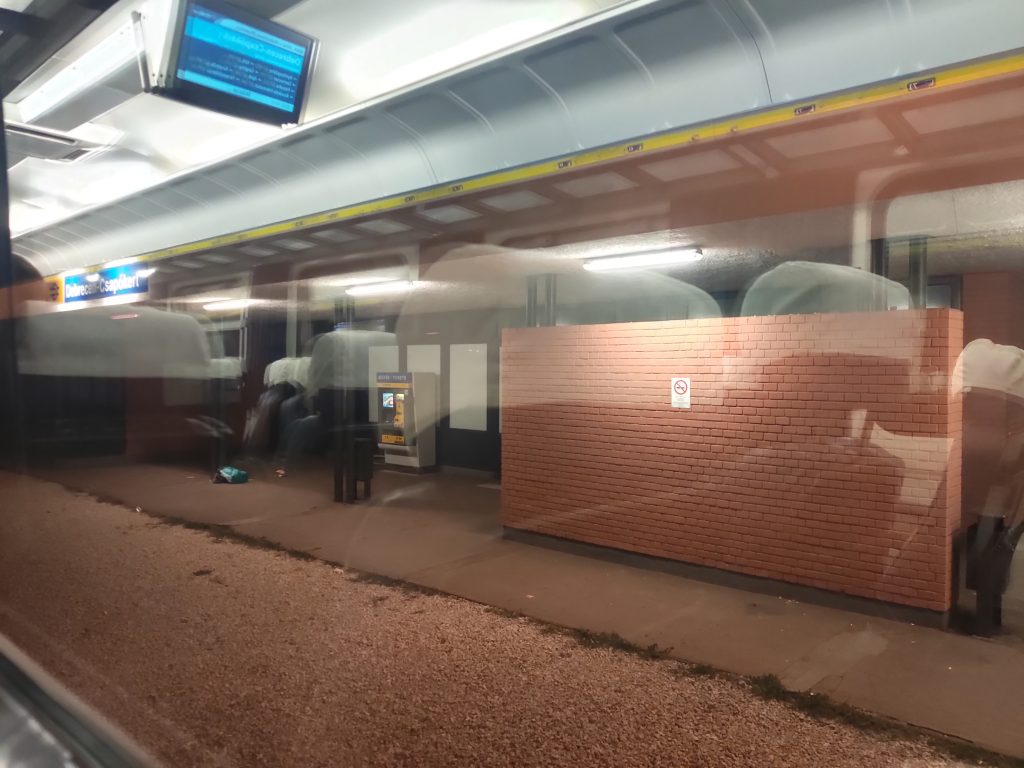
Since the train was a regular passenger train, more and more commuters started to show up. The rest of the train consisted of regular, less comfortable carriages, so after a while, the more comfortable one was already 50% full.
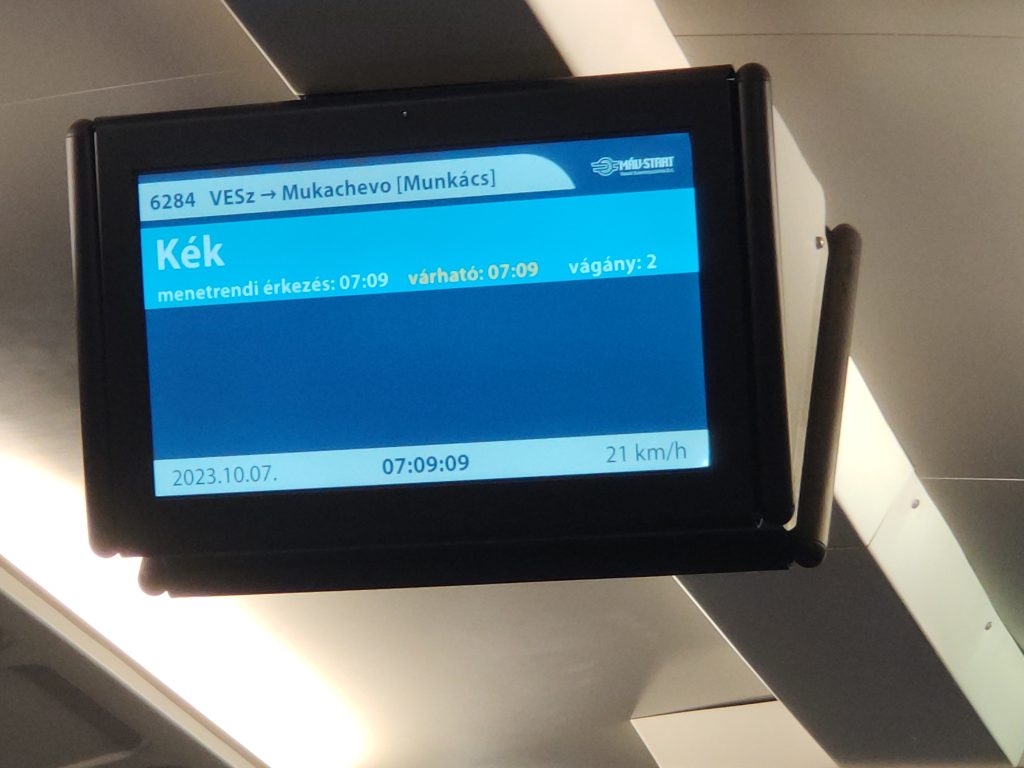
The train ran punctually, and after about 2 hours of stopping at every station on the way, we arrived in the Hungarian border station, Záhony.
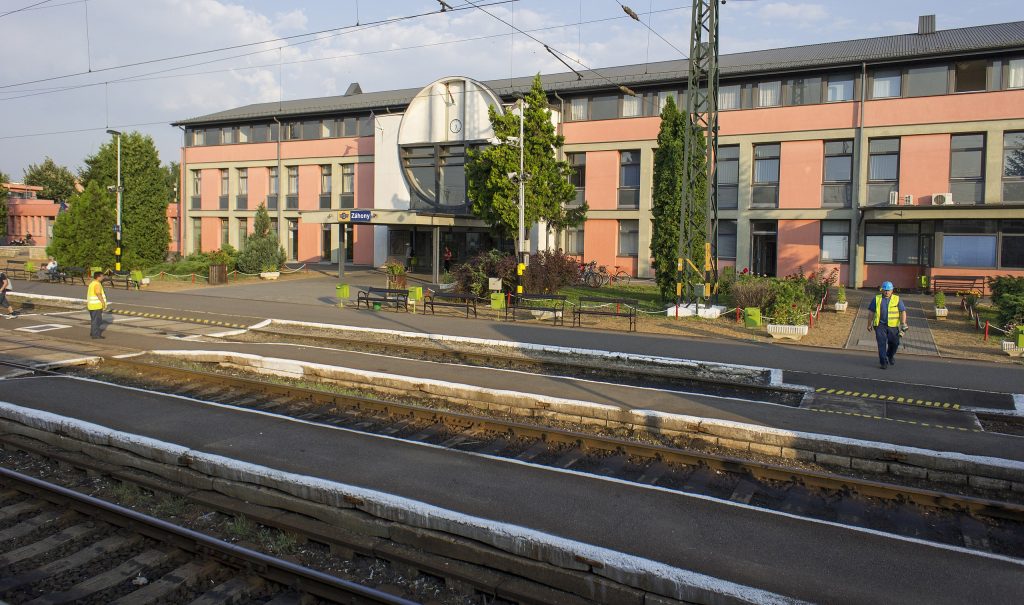
For a while, there was not much going on. Then, we began rolling towards the border. I was quite confused, however it was just a shunting maneuver. We were being shunted to a short border train, with a class 41 locomotive on the front.
Then, the passport checks began with a notable latency. I’ve overheard a conversation between the elderly couple, saying that the delay was caused by refugees. I knew I didn’t have to leave the train, so I’ve patiently waited for border guards to board the train and to scan our passports. After the train was given clearance, we were shortly approaching Ukraine.

A few minutes later, we’ve arrived at Chop station. The two young adults and the elderly couple left the train here, only a middle aged woman remained in her seat. I’ve asked her about her destination, and she said she was going to Mukachevo, so I knew I had to remain on the train for the Ukrainian border control. The other people were probably changing trains towards further destinations.
A female border guard with a small child collected our passports, and a male border guard was checking every hidden spot in the carriage. He also checked my luggage by eye, and he asked me about my destination and the purpose of my visit. Thankfully, he knew good English, so I’ve responded accordingly. Despite the amount of documents required to cross the border (mentioned in the Preparation section), nobody asked for them. Later, they’ve returned my passport with a Ukrainian stamp.
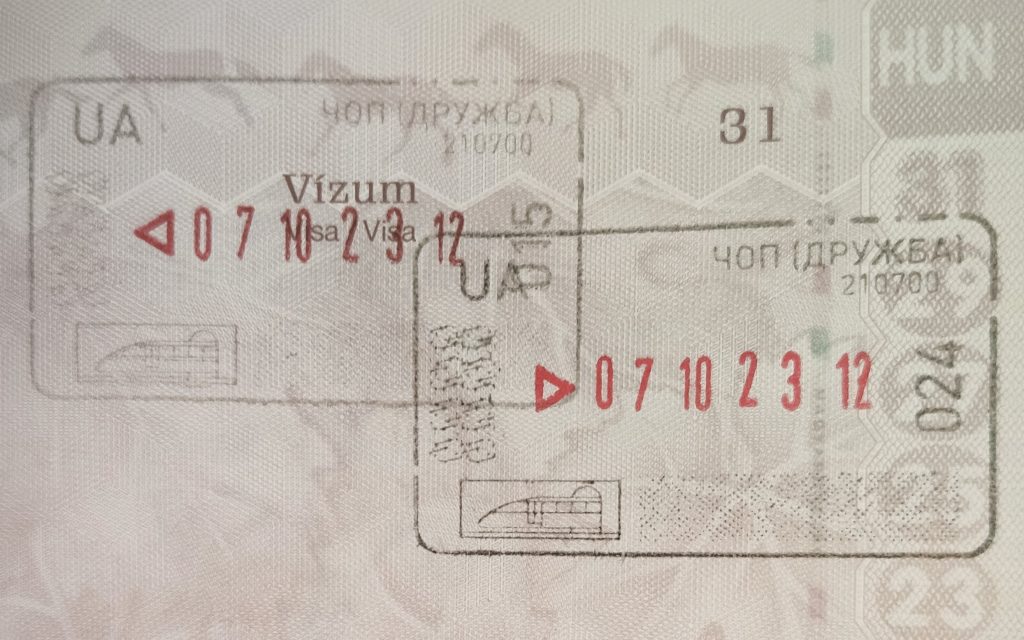
The tracks were not in a great condition. After departure, we were averaging speeds of 40 kilometers per hour. However, such a journey is only possible because a standard gauge network was built all the way to Mukachevo, so I can forgive on this. Still, this ~40 km section took 1 hours and 10 minutes.
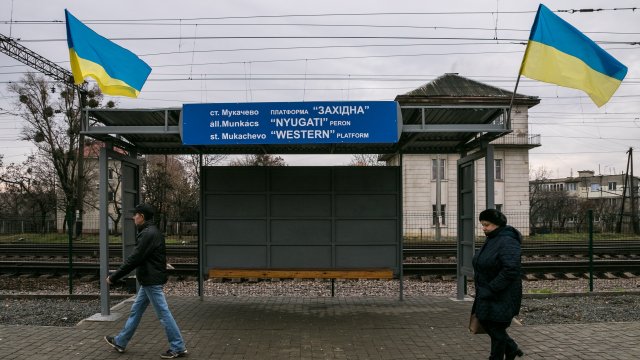
We’ve arrived at around 11:45 local time, at the standard gauge platform, still half a kilometer away from the main building. After helping the woman with her suitcase, I’ve decided to check out the station building, mainly because I’ve needed a SIM card.
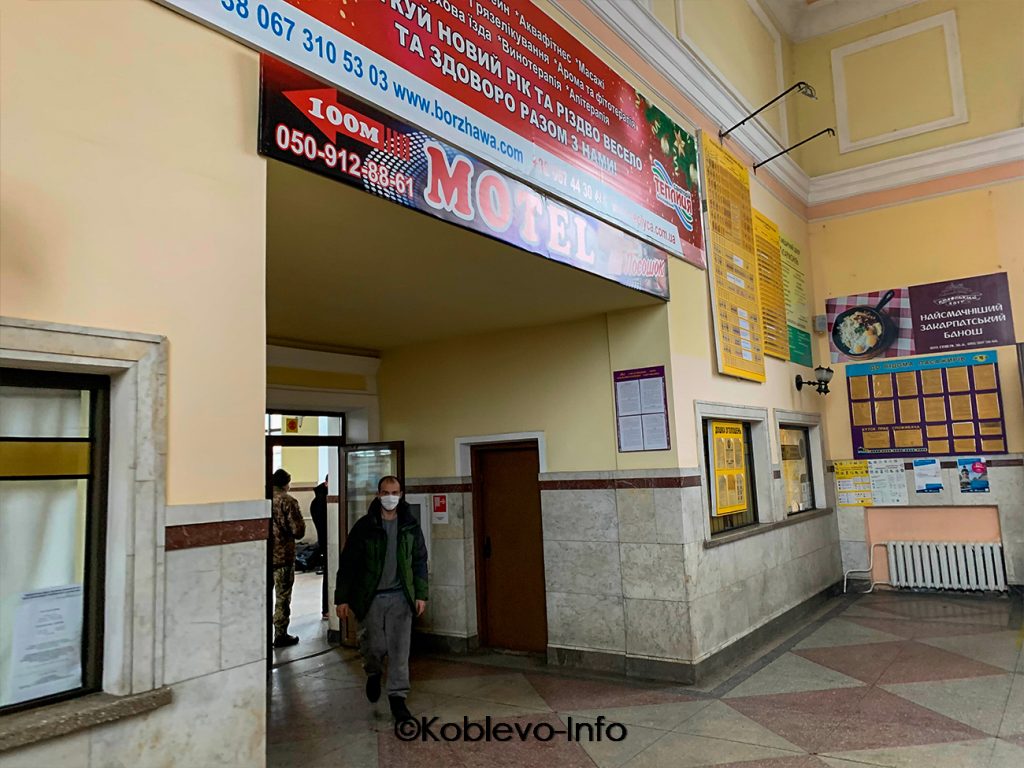
I was able to find a SIM card vendor, however, I was unable to use my credit card, so this had to wait.
In the center of Mukachevo
I left the station for the city centre.

I’ve found a currency exchange office, where I could exchange my Hungarian Forints (HUF) into Ukrainian Hryvnia (UAH). When I asked about a GSM store, the employee pointed next to the exchange office. Apparently, my eyesight wasn’t large enough. For around 5€, I was covered with more than enough 4G mobile data.

Mukachevo has a charming city centre. By the time I was there, a street market had started, where people were selling self-made products. I’ve decided to drink some Kvass, a rie-based fermented drink.
The centre has it’s fair share of statues, below are some images I’ve decided to capture:
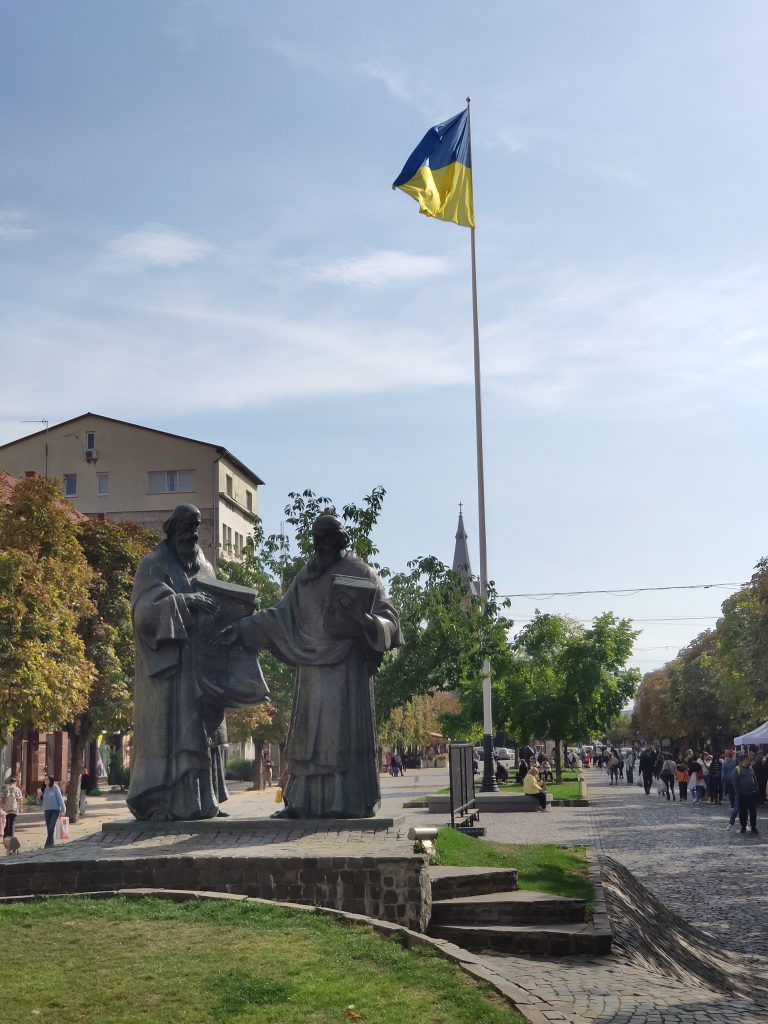
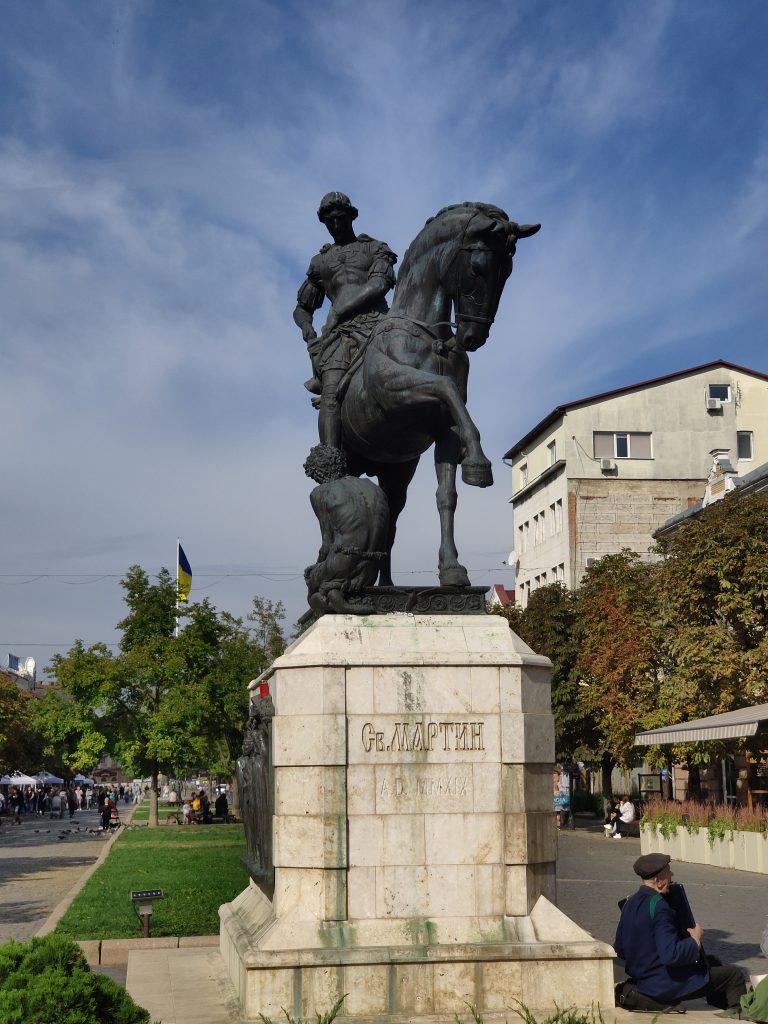
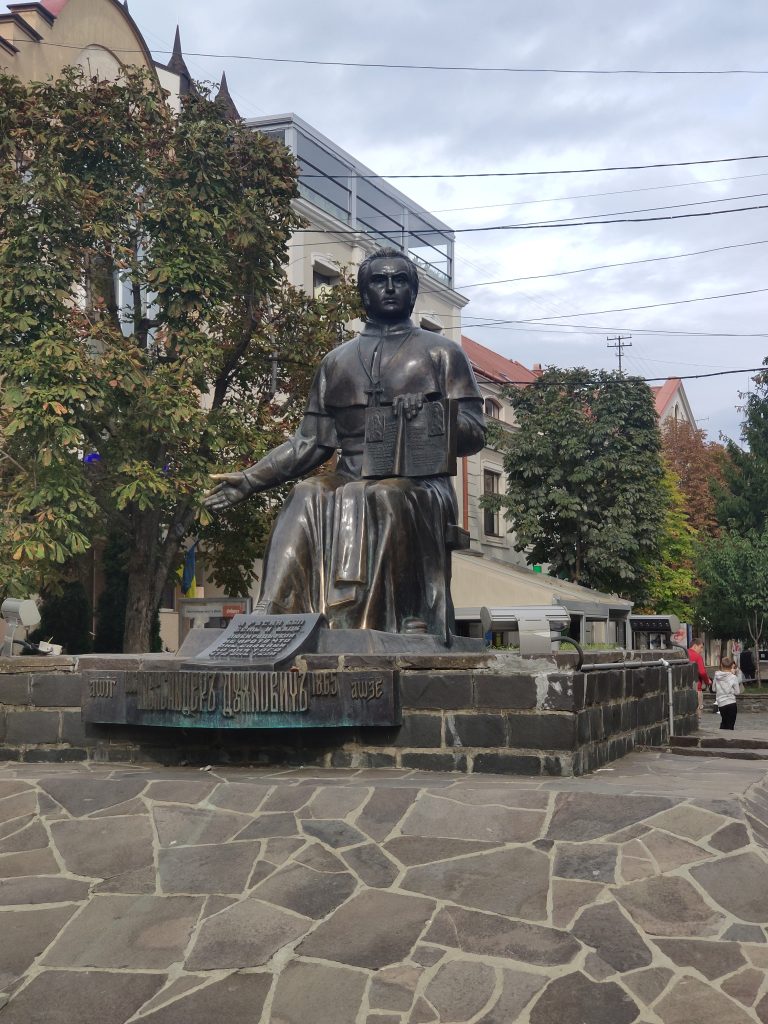
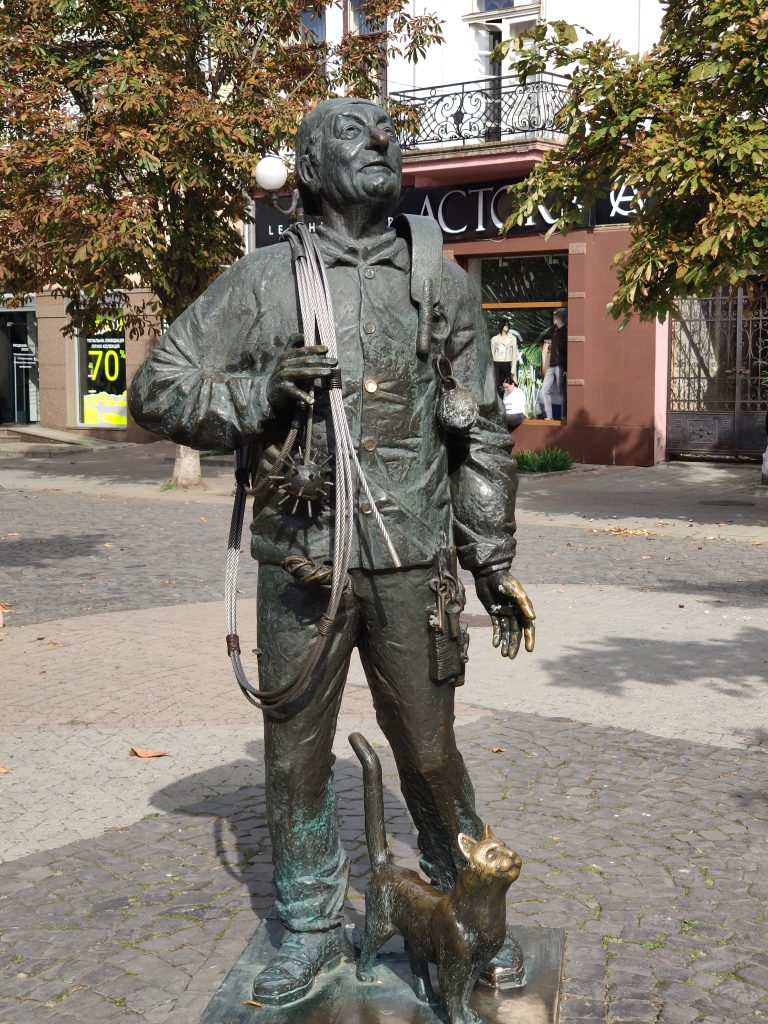
Also, there were two churches nearby which I’ve wanted to check out.
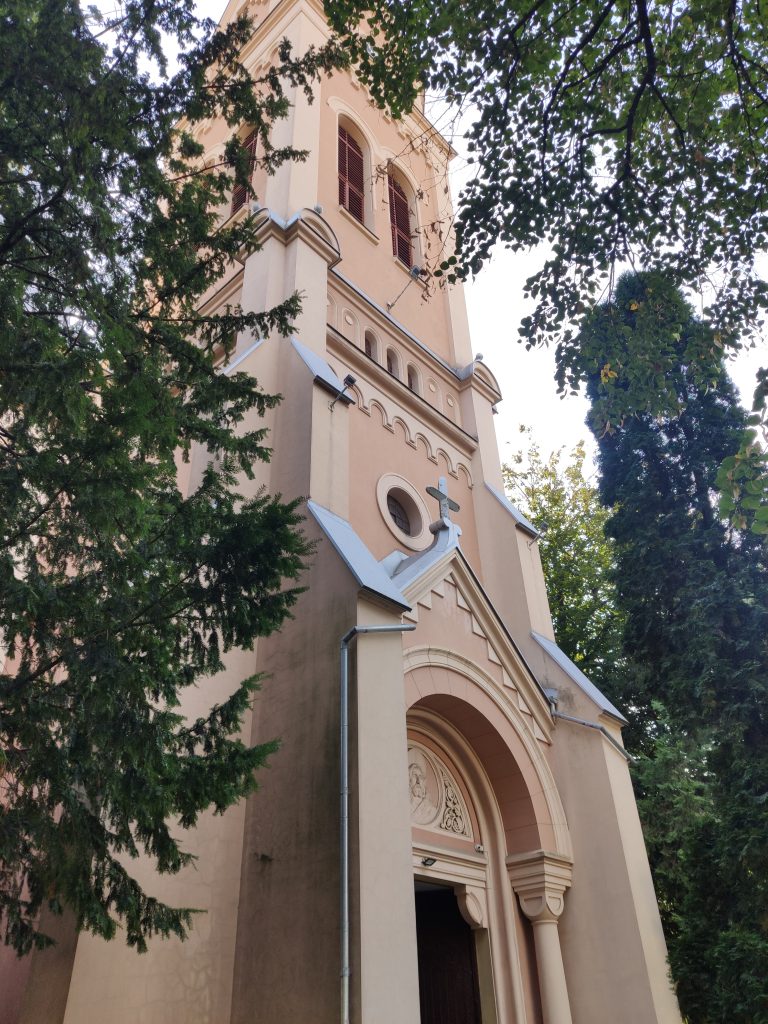
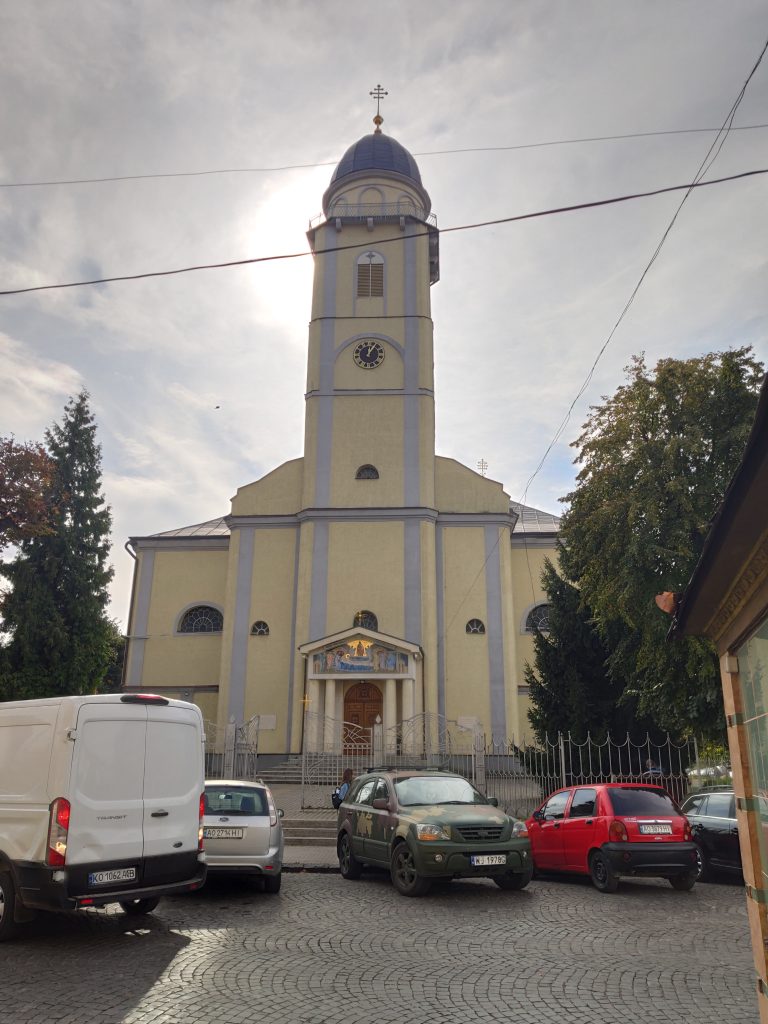
Effects of the war were minimal, however, there were two notable signs. First, the police station was blocked by sandbags. Second, there was a memorial set up for soldiers who fell in the war. Taking pictures was out of question here.
I went to the bridge, where I had a clear vision of the river.

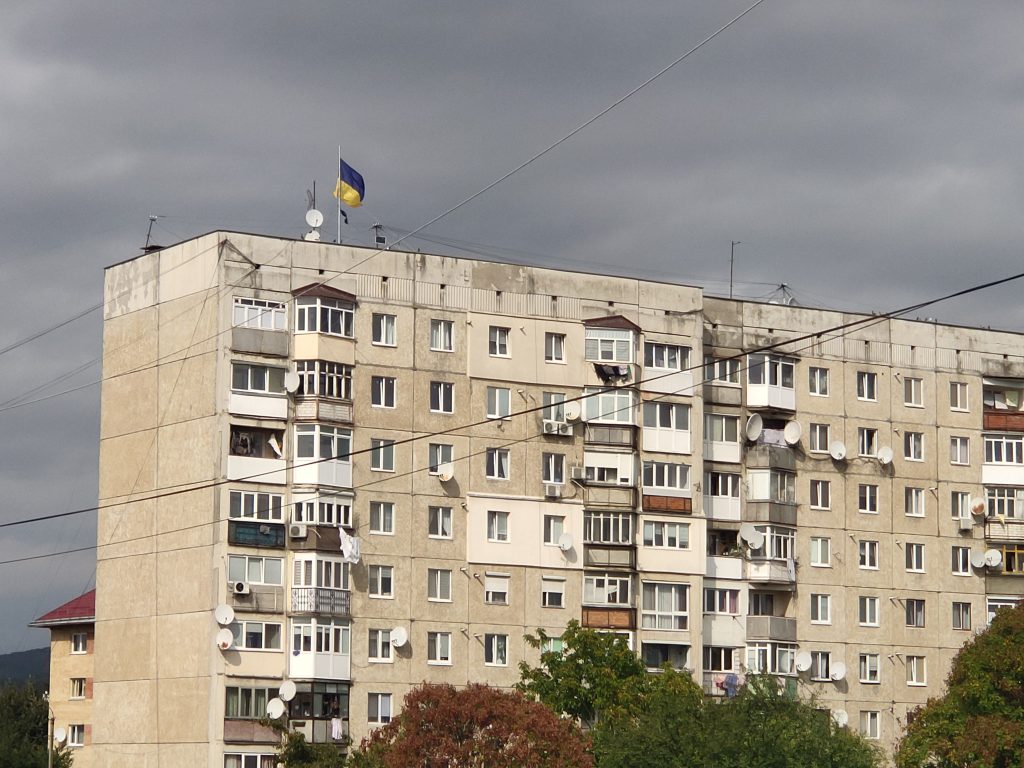
The Flag of Ukraine on top of a residential building
The Palanok Castle
When it comes to public transport, I can usually adapt to the system. However, Mukachevo was a different story. Information about the public transport system was very hard to find. Since I can’t take such risks, I’ve decided to use Bolt Taxi. The prices were fair, and I’ve only used it two times.
The driver was a bit curious about where I was from. Thankfully, I was able to tell him (in broken Ukrainian). We’ve arrived to a narrow street, where he guided me to the stairs of the Castle.
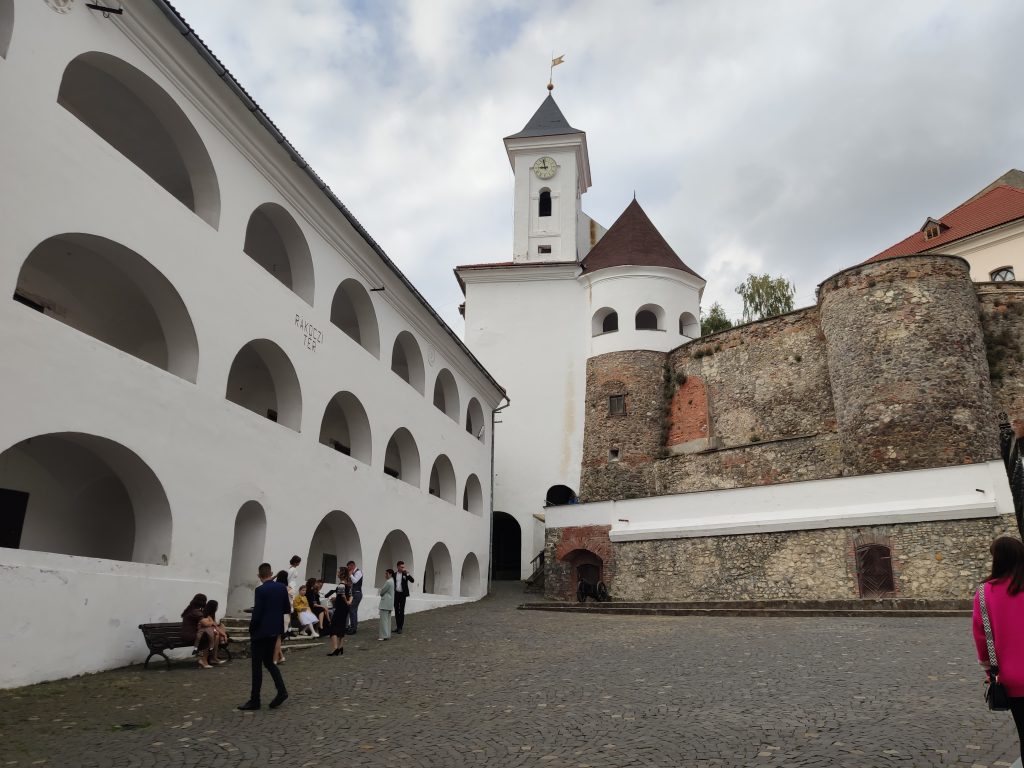
Perhaps the most famous attraction of Mukachevo is it’s Castle. The Castle is very well preserved, and the entry ticket grants access to numerous exhibitions.

Of course, I had to leave a mark about my visit:
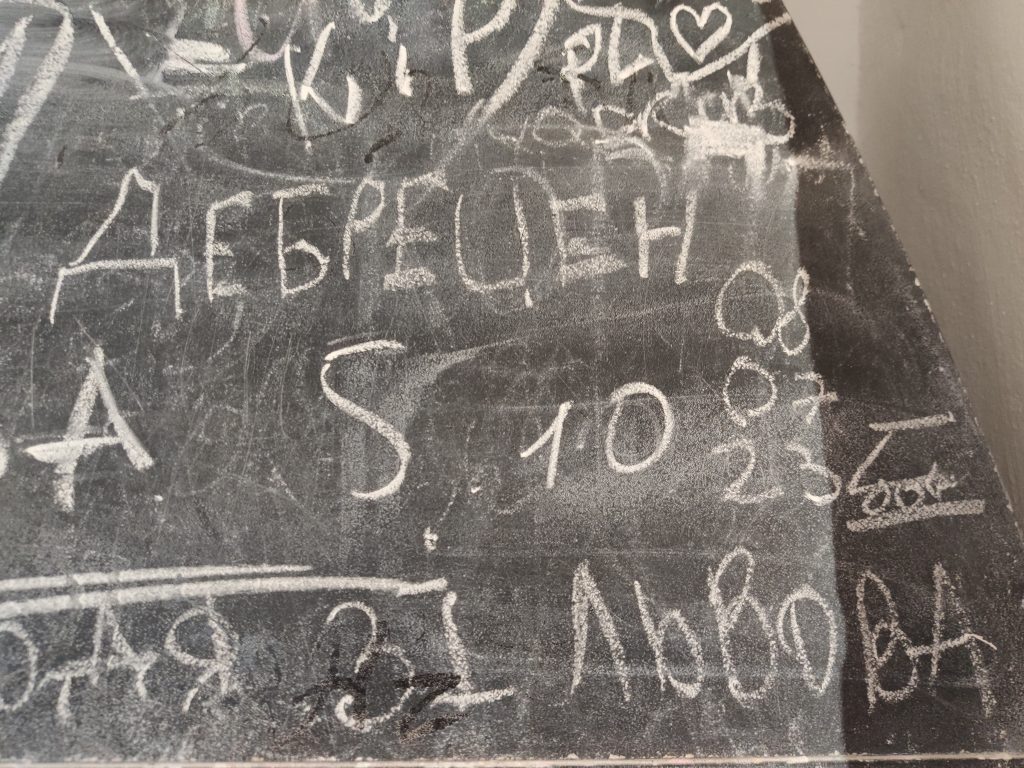
Many platforms and viewpoints were closed due to being strategic military locations. One of such points was the statue of Ilona Zrinski and Ferenc Rakoczi the Second.
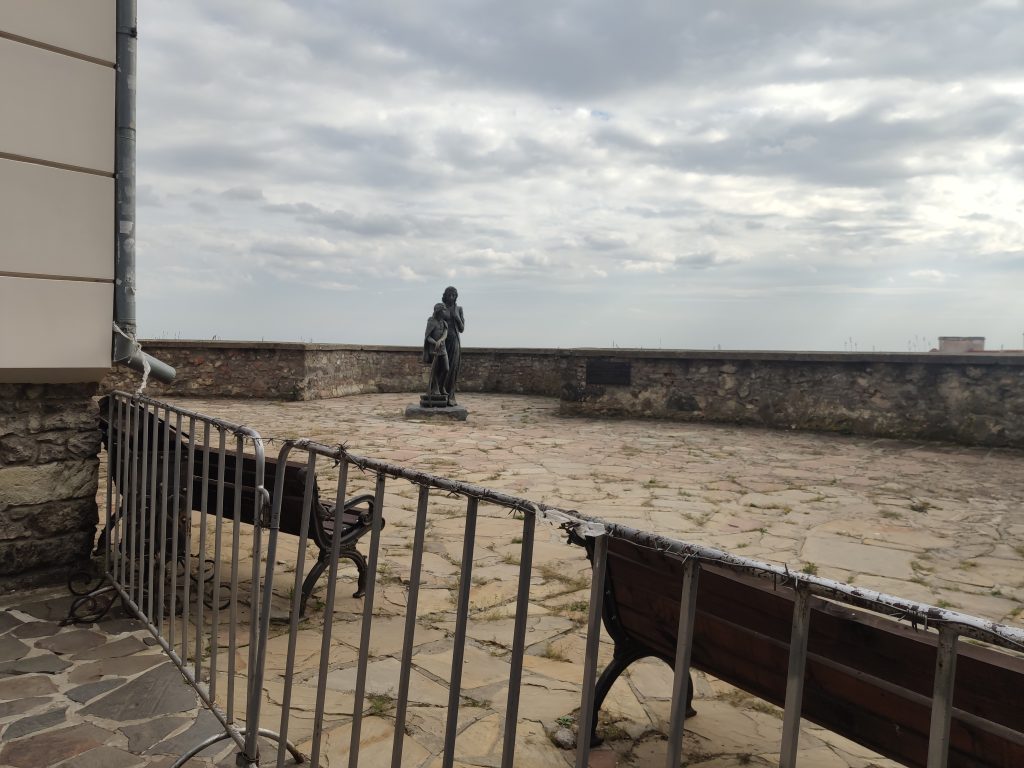
There was a good restaurant near the Castle, so I’ve decided to head down, and navigate my way to Poryadnyy Gazda, a famous restaurant with their own Homebrew beer.
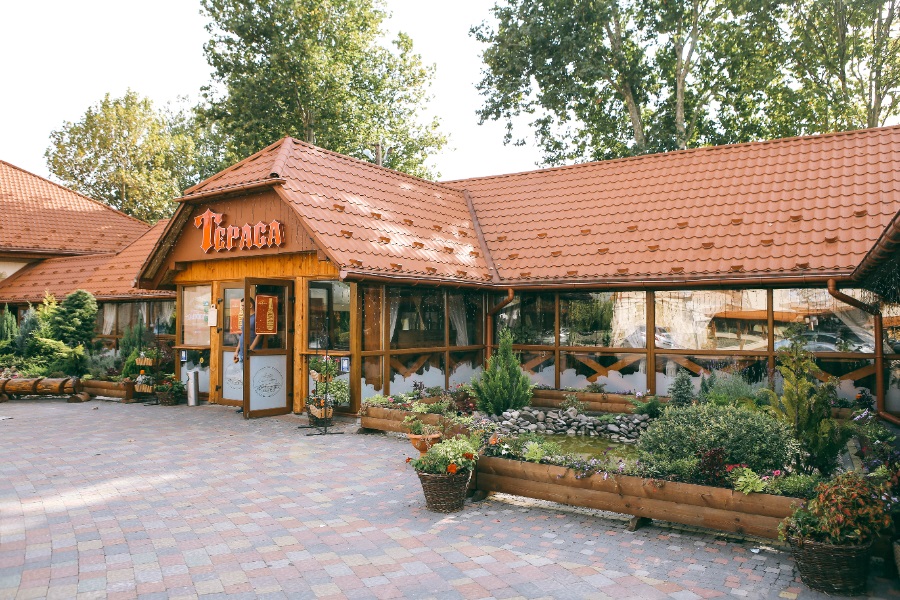
The food was so amazing that I would’ve payed twice for it. I took a Taxi back to the station, where I’ve waited for my train.
The hard way back home
While I was at the station, I had the opportunity to charge my phone, and to look at some long distance trains. I saw lots of sleeper trains departing to the eastern regions. When the time came, I took a walk back to the Western Platform, where a Czech class 812 railbus was waiting for me.
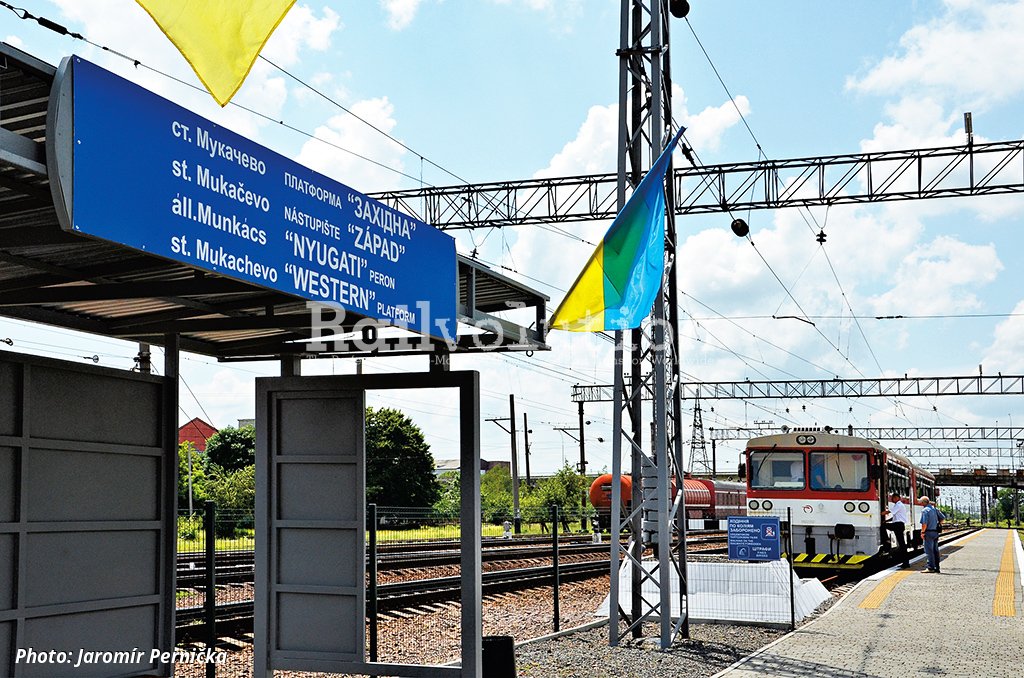
We’ve departed about 5 minutes late. The conductor came and asked for or tickets. I was surprised that she knew fluent hungarian. She explained that there was a problem with my ticket, however, I didn’t understand the problem. I explained that I was only going to Chop, and she accepted my answer. We’ve had a long wait at the entrance of Chop station, and when we’ve rolled in, I left the train. The border guards were a bit confused, however, they’ve pointed to the entrance of the station building.
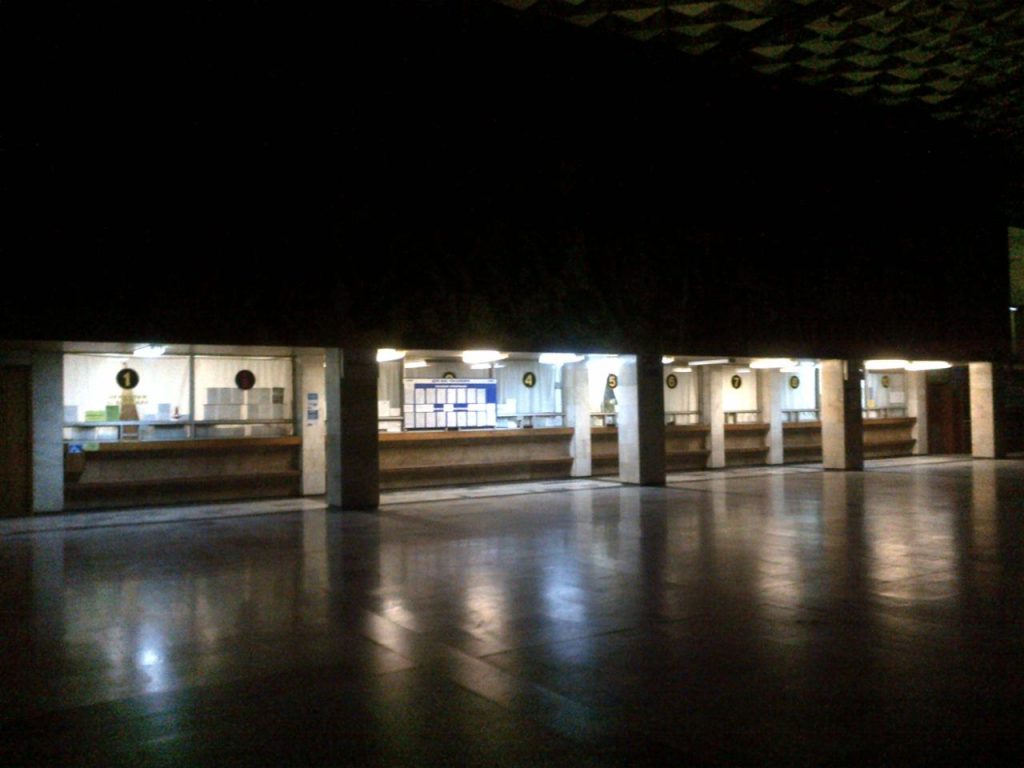
The scene was a bit chaotic. Several people were waiting for the train to Hungary. First, I’ve accidentally went into the wrong line, where people who were being processed to Slovakia stood. As the minutes passed by, and the the delay started to become more significant, I’ve slowly accepted my faith that I won’t be reaching the last train home. Yes, the train, which I’ve placed in my itinerary was really the last one.
The train from Hungary finally arrived, and people were being processed to enter Ukraine. The processing was slowed down by a family, who had a conflict with the officers, impermeably because of their illegal goods. Lots of aggression later, they were free. Taxi drivers were offering people rides to nearby towns.
Finally, we were let into the customs area. Surprisingly, they didn’t look through my backpack, and I was the first to show my passport to the immigration officer. After we were all stamped out, they’ve opened the doors to the train.
The train slowly rolled over the Tisza river, and I was back in my home country. Since I’ve had no way home, I’ve decided to stay at the station until the next morning. There was one man, who was in the same boat as me, so we’ve talked through the night. There were foldable beds at the station, however, they were occupied by a family. When the morning came, we’ve said goodbye to eachother. He chose a slower passenger train instead of the 140 Hortobágy EuroCity, which I’ll be taking.
Summary
Overall, this journey has left a positive image of Ukraine on me. I would definitely visit again, however, the unstable situation is a large gatekeeper. However, I’ve learned that the schedule of the border trains are only a suggestion, and you should always count with 1.5-2 hours of delay. Anyways, thank you for reading my trip report, and I’ll see you in my next one.
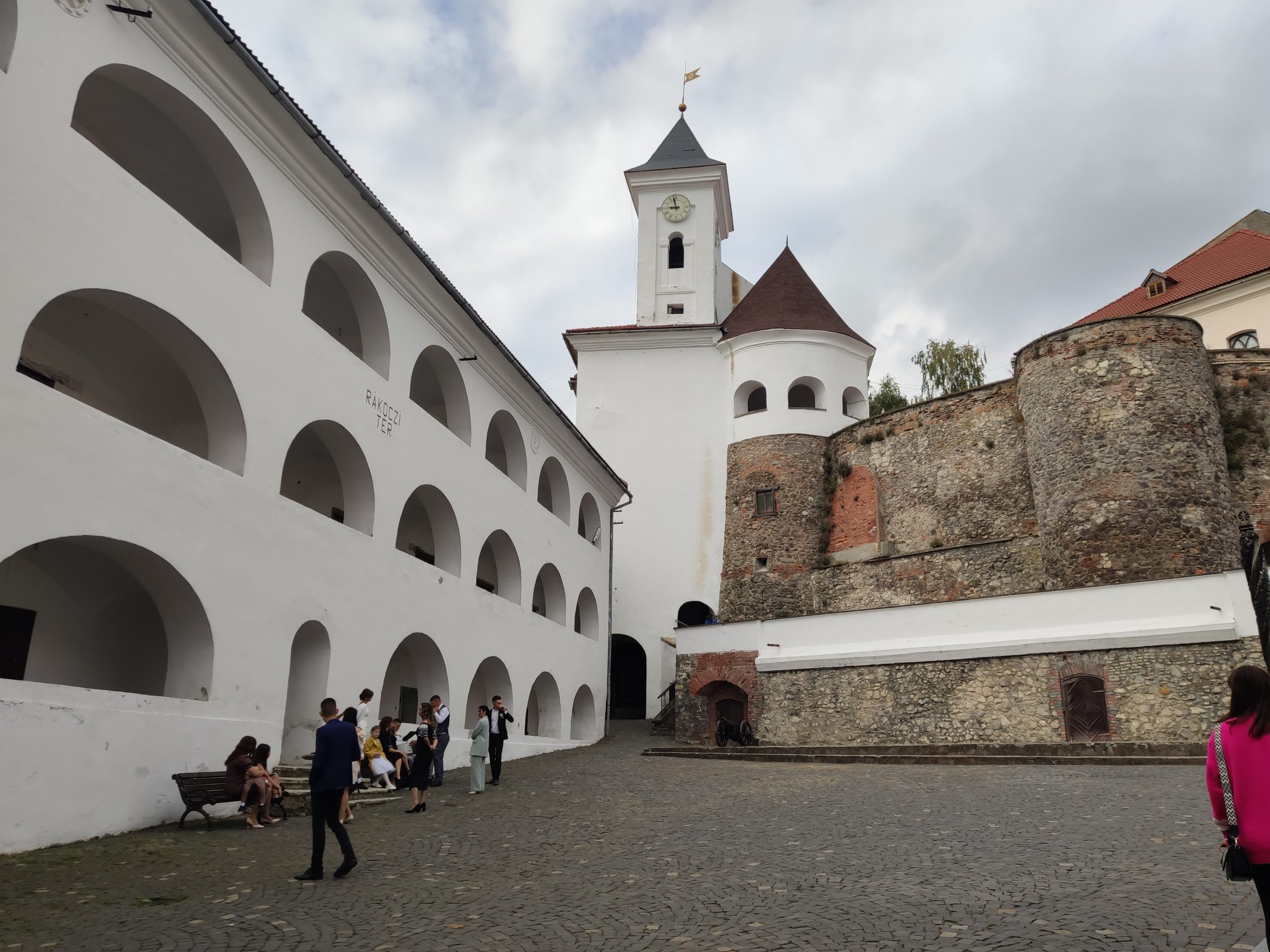
Leave a Reply